By Michael Hull
As powerful, fast-moving German panzer and infantry columnsrampaged across Belgium, Holland, Luxembourg, and into northern France early in May 1940, the British held their breath and watched apprehensively from across the narrow English Channel.
The lightning “blitzkrieg” advance split the retreating French and British armies, and the outlook was bleak for Western freedom. Within a few days, the small British Expeditionary Force, mauled and leaving behind its heavy equipment after a fighting retreat, was evacuated miraculously from the fire-swept beaches of Dunkirk. The dispirited French capitulated after a few desperate weeks, and Britain was left alone to face the Axis powers. As Prime Minister Winston Churchill grimly told the House of Commons on May 13, “I have nothing to offer but blood, toil, tears … and sweat.”
Across the tiny island nation, people went about their business with characteristic calm and even good cheer, though all knew that with France fully under the German heel they were sure to be invaded. Their innate stoicism veiled fear, for it was no secret that the British defenses were in a pitiful state. Army units were away battling the Italians in East Africa and the Germans in Norway, and Royal Navy squadrons were strung out thinly in the Mediterranean, Atlantic, North Sea, and the Far East.
In England, there were troops in the process of training and reequipping and also some coastal defense units, but if the expected 39 seasoned German panzer and infantry divisions landed, they would face only one fully trained Canadian division and a second partially trained division. The Spanish and Napoleon Bonaparte had attempted to invade England and had failed. But in the bright spring of 1940 there was little to stop the Nazi juggernaut. It was just a matter of time.
Britons scanned cloud-flecked skies for the first signs of German paratroops; antiaircraft gun emplacements were hastily dug on golf courses and in parks; concrete pillboxes were built on hillsides and at road junctions; and highway and railway station signs were blacked out to confuse potential invaders. But there was virtually no significant defense force available. A swiftly organized armed militia was the only answer, and Secretary for War Anthony Eden proposed it to the British Cabinet in London on May 13, 1940.
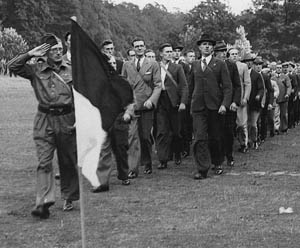
So, on the following day, the handsome, urbane Eden broadcast a national radio appeal for men of all ages to volunteer in the defense of the homeland. He said, “We want large numbers of such men in Great Britain who are British subjects, between the ages of 17 and 65, to come forward now and offer their services in order to make assurance doubly sure. The name of the new force which is now to be raised will be the Local Defense Volunteers. The name describes its duties in three words. You will not be paid, but you will receive uniforms and will be armed. In order to volunteer, what you have to do is give your name at your local police station, and then, when we want you, we will let you know.”
The stated mission of the LDV was to deal with landings of German parachute troops. Its tactical functions would be “(a) warning; (b) delaying the enemy; (c) harassing the enemy.” The volunteers were to “serve as observation and combat patrols, which are designed to stalk the enemy and hold a defensive position as long as possible, thus forcing the enemy to check his advance.” Their task was to “delay and weary such forces, thus aiding their own regulars in their counterattack.” Part of the militia’s function was also to “carry on the struggle, if necessary, in areas temporarily overrun by the enemy.”
The response to Eden’s appeal was instant. Even before he had finished speaking, lines of volunteers started forming outside police stations, bewildering local constables who had not been briefed. By July 8, a total of 1,060,000 men and boys had signed up, eager to “do their bit.”
Motley groups of paunchy, ruddy-cheeked Boer War and World War I veterans, callow teenagers, and men classified medically unfit for the regular services mustered in cities, towns, and villages for nightly and weekend training sessions. Working men kept their jobs and spent most of their spare time learning to become soldiers. The need for the LDV became even more urgent in the next few weeks as German forces massed on the other side of the English Channel and as the men of General John V. Gort’s defeated BEF—bedraggled, dazed, but unbowed—were brought home from Dunkirk.
The LDV got off to a spontaneous and haphazard start, and there was a dearth of weapons and equipment available for it. After Dunkirk, weapons were even scarcer. Training began on a freelance basis and was organized by veterans or provided by schools set up on private initiative by wealthy backers. One such training school was established at Osterley Park in West London, supported by leading publisher Edward Hulton and headed by Tom Wintringham, a former Communist who had led the British contingent of the International Brigade during the Spanish Civil War. His goal was a people’s army trained in guerrilla warfare and with a minimum of formal drill and discipline. After instructing 5,000 men, the school was taken over by the War Office.
Former Army officers and sergeants enthusiastically emerged from retirement to lead LDV platoons and companies, instructing them in marching, marksmanship, bayonet and hand grenade use, night fighting, fieldcraft, map reading, camouflage, signaling, aircraft recognition, and first aid. Some units had the advantage of guidance from NCOs in the crack Guards regiments. In town squares, outside timbered village inns and taverns, and in country lanes and meadows, the new citizen soldiers drilled with aging shotguns, pistols, hunting rifles, pitchforks, clubs, hoes, broom handles, and even ancient pikes donated by museums. Small boys trooped after the marchers in amusement. Equipment was minimal, and the volunteers’ only identification was an “LDV” armband until they were eventually issued with ill-fitting Army battledress or denim overalls.
Prime Minister Churchill took a keen interest in the concept of the volunteer force, which he had suggested in October 1939, the month after World War II broke out. But he did not like the name Eden had presented. “I had always hankered for the name Home Guard,” said the prime minister. So, on July 26, he told Secretary Eden, “I don’t think much of the name, Local Defense Volunteers, for your very large new force. The word ‘local’ is uninspiring. Mr. Herbert Morrison (minister of supply and later home secretary) suggested to me today the title, ‘Civic Guard,’ but I think ‘Home Guard’ would be better.”
The persuasive Churchill found that “everybody liked this,” so the LDV became the Home Guard. A new spirit of purpose took hold, and, the prime minister observed, “The mighty organization, which presently approached one and a half million men and gradually acquired good weapons, rolled forward.”
The organization of the Home Guard was overseen by the tall, handsome General Sir Claude Auchinleck, leader of the Southern Command and an Indian Army veteran of Egypt, Aden, Mesopotamia, the North-West Frontier, and the ill-fated Norway campaign. With his encouragement, the Home Guard became a strong military asset. “The Auk” later distinguished himself by checking Field Marshal Erwin Rommel’s vaunted Afrika Korps at the first Battle of El Alamein on July 1-27, 1942, though he lost favor with Churchill.
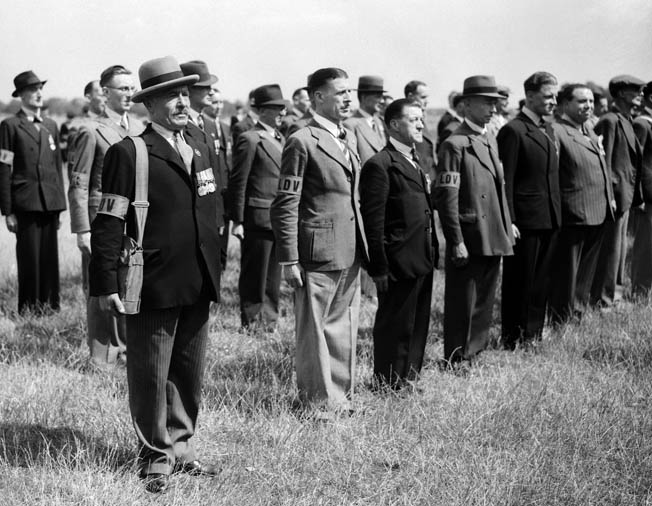
The militia concept caught the national imagination. One of its members, Basil Boothroyd, wrote in the weekly humor magazine, Punch,“For some reason or other, the press has taken us to its fickle heart. We take precedence over the RAF, Mr. Churchill, and Gracie Fields (a popular Lancashire singer and comedienne). We appear in every other headline. The penny papers have special articles telling us how to take cover behind trees and how deep we ought to dig our trenches. The Times has light leaders about our neckties and whole columns of correspondence about whether we’re worth one-and-sixpence a night or not.”
Fearful of the peril Britain faced, Churchill was convinced of the potential worth of the Home Guard. He saw it “manning a line of antitank obstacles running down the east center of England and protecting London and the great industrial centers from inroads by armored vehicles.” As the prime minister told Sir Josiah Wedgwood, a parliamentary member, “You may rest assured that we should fight every street of London and its suburbs. It would devour an invading army, assuming one ever got so far. We hope, however, to drown the bulk of them in the salt sea.”
Late that July 1940, Churchill observed, “For the first time in 125 years, a powerful enemy was now established across the narrow waters of the English Channel. Our re-formed Regular Army, and the larger but less well trained Territorials (National Guard), had to be organized and deployed to create an elaborate system of defenses, and to stand ready, if the invader came, to destroy him—for there could be no escape. It was for both sides ‘kill or cure.’ Already, the Home Guard could be included in the general framework of defense.”
From the start, the part-time soldiers found themselves the butt of jokes, songs, newspaper cartoons, and even snide comments questioning their chances if faced with invading Huns. Some people started referring to the men of the Home Guard as the “Broomstick Army.” But there was no doubting their pride and zeal.
Turned down by the War Office for health reasons, 61-year-old, sciatica-ridden Arthur F. Umfreville Green volunteered for the LDV platoon in the village of Storrington near the West Sussex coast and joined it on June 15. A retired Royal Artillery officer who had fought in the Boer War (1899-1902) and at the First Battle of Ypres in 1914, he said, “I was a young brigadier general nearly 25 years ago, and was proud of it. I am a damn sight prouder to be an old volunteer today and to show respect to those put in authority over me.” He became a musketry instructor, weapons procurer, and adviser to the commanders of other units.
Also among the first to join the LDV was 55-year-old, owlish Maj. Gen. Percy C.S. Hobart, who had recently been forced into retirement. He was promoted at once to the rank of lance corporal and charged with the defense of his home village, Chipping Campden, in Gloucestershire. He was soon made a deputy area organizer. An outspoken Army maverick and armored warfare innovator, “Hobo” Hobart later gained fame as the creator of “Hobart’s Funnies,” a series of specialized tanks used with great success by the Allies in the 1944 Normandy invasion.
Brian Poole, an enthusiastic teenage member of a Home Guard platoon in Cheshire, wrote in a letter to his American pen pal, Trude, in August 1940, “The best news yet, I am in the Home Guard (ex-Local Defence Volunteers). I’ve had three rifle drills up to now and I do my first duty from 9 PM to 6 AM on Wednesday, three hours duty, the rest a sleep on the floor ready for action. We are hoping to be in the fight night fronts!!! What we want is not to shoot the Bosche but to bayonet him. That which the Germans don’t like, cold steel…. Done a fine bit of work today, cleaned 20 rifles with Dad. Not so bad eh? Our house is simply littered with field dressings, supplies of uniforms, steel helmets, ammunition and I don’t know what.” Poole was soon in action, helping to search for the crew of a German Junkers Ju-88 bomber shot down during the bombing of Liverpool.
One of the first to enlist in the Home Guard was 55-year-old Jack Potter, the father of seven children. He carried a Lee-Enfield infantry rifle and a hoe.
A number of celebrities joined the Home Guard soon after its inception, and readily encouraged others to do so. J.B. Priestley, the popular writer and broadcaster, told his wide radio audience, “Ours is a small and scattered village, but we’d had a fine response to the call for volunteers; practically every able-bodied man in the place takes his turn…. I think the countryman knows, without being told, that we hold our lives here, as we hold our farms, upon certain terms. One of these terms is that while wars still continue, while one nation is ready to hurl its armed men at another, you must necessarily stand up and fight for your own…. There we were, ploughman and parson, shepherd and clerk, turning out at night, as our forefathers had often done before us, to keep watch and ward over the sleeping English hills.”
Author George Orwell, a socialist and a wounded veteran of the Spanish Civil War who would later write the milestone novels Animal Farm(1945) and Nineteen Eighty-Four(1949) was characteristically more cynical. As a sergeant in a London detachment, he reported, “The Home Guard swells to a million men in a few weeks, and is deliberately organized in such a way that only people with private incomes can hold positions of command. It is … the most anti-Fascist body existing in England at this moment, and at the same time is an astonishing phenomenon, a sort of people’s army officered by Blimps [“Colonel Blimp” was a cartoon caricature of an aging, outdated Army officer]. The rank and file are predominantly working class, with a strong middle-class seasoning, but practically all the commands are held by wealthy elderly men, a lot of whom are utterly incompetent.”
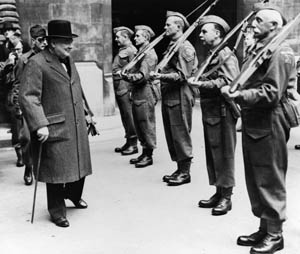
Nevertheless, during the sunny, tense spring and early summer of 1940, the men and boys of the Home Guard drilled and trained, practiced on firing ranges operated by British and Canadian troops, and occasionally joined in their maneuvers. They stood ready for invasion, buying precious time for the depleted Regular Army to be expanded, reorganized, and reequipped. Starting in August 1940, Home Guard units were affiliated to county regiments of the Army.
The volunteers performed a wide variety of useful if humble functions. They set up barricades of felled tree trunks, hay carts, and scrapped vehicles to hamper possible enemy columns, stood watch on southern beaches and other vulnerable areas, patrolled the chalk hills of the South Downs, guarded road junctions, bridges, airfields, power stations, factories, and railway tunnels, manned roadblocks to check people’s identities and ensure that no members of any German fifth column were infiltrating their areas, and sometimes rounded up downed Luftwaffe fliers. Some volunteers stood guard on 1,600-year-old ramparts erected by the Roman invaders of England. Bicycle-riding Girl Guides (Girl Scouts) aged from 12 to 16 acted as messengers for Home Guard units.
Inevitably, the volunteers’ zeal caused some cynical fellow citizens to look upon them as overgrown Boy Scouts with weapons, perhaps more of a threat than enemy paratroops.
London’s many park keepers in their quaint brown uniforms were mobilized and armed, the railways established their own Home Guard force of 200,000 men to guard junctions and main and branch lines, and mounted Home Guard detachments were formed in rural areas from the rugged northwestern moorlands to Dartmoor and the rolling uplands of the scenic southwest. In three-man pickets and accompanied by trusted Alsatians (German shepherds) and mastiffs, armed farmers, grooms, and hunt members ran messages and patrolled day and night.
Although their own country was still neutral, Americans living and working in Britain also rallied and formed a mobile Home Guard detachment in July 1940. Based in London, it was led by retired Brig. Gen. W.H. Hayes, who had served on the staff of General John J. Pershing, commander of the American Expeditionary Forces in France in 1917-1918. The bespectacled, pipe-smoking Hayes explained, “We started the American unit because our homes are here, and we wanted to show that we were ready, with the British, to share the responsibility of defending their soil.”
Meanwhile, as its numbers grew, so did the weapons and equipment made available to the Home Guard. British industry was in high gear, and more Lee-Enfield rifles, machine guns, and hand grenades were distributed to the volunteer platoons. In July 1940, the first shipments of half a million rifles and light machine guns purchased from the United States and Canada crossed the Atlantic safely. These included surplus Springfield Model 1903 rifles, Canadian Ross rifles, and Browning automatic rifles.
Recognizing the growing Nazi menace and steering his neutral nation away from its isolationist stance, President Franklin D. Roosevelt had decided to send as many weapons as possible to the British Army after the Dunkirk evacuation and the fall of France. By ransacking arsenals and armories, America was able to transfer 970,000 rifles, 87,500 machine guns, 895 field guns, and large quantities of ammunition to England. Although most of the arms were leftovers from World War I, they were to prove useful for training purposes and for arming the Home Guard.
Also, the newly formed American Committee for the Defense of British Homes dispatched thousands of assorted weapons and ammunition, including rifles from game hunters and private collections, modern revolvers, old frontier buffalo guns, and rifles used in Louisiana during the Civil War. Many of the donated weapons had little messages attached to them. One read:
“Dear friend, for Heaven’s sake forbear
To let a German come too near;
Blest be the man whose aim is straight,
But woe to him who draws too late.”
Special trains were waiting in all of the ports for the precious cargoes, and Home Guard members sat up all through the night to receive them. “Men and women worked day and night making them fit for use,” Churchill reported. “By the end of July, we were an armed nation, so far as parachute or airborne landings were concerned. We had become a hornet’s nest.”
The prime minister was right in more ways than one, for the Battle of Britain was now raging over eastern and southeastern England. German bomber formations were overhead to soften up defenses preparatory to invasion, and Royal Air Force Fighter Command Spitfires and Hurricanes were scrambling hourly to repel them. The fate of Western freedom was being decided in history’s first major aerial battle, and the Home Guard was playing its part on the ground.
While being machine gunned, the men of a Home Guard platoon coolly shot down a German bomber with 180 rounds of rifle fire during a raid on southern England on August 18. Another Home Guard unit later downed a Dornier bomber with rifle fire. News of the citizen volunteers’ marksmanship drew virulent responses in the German press and on Berlin radio.
“The British government is releasing criminals from prison and training them for murder,” reported one announcer bitterly. “Every Englishman who agrees to act as a franc-tireur is digging his own grave. Churchill is leading the British civil population on a fatal path.”
But the RAF, aided staunchly by the Regular and volunteer gunners on the ground, defeated the Luftwaffe. Nazi dictator Adolf Hitler’s planned invasion, Operation Sea Lion, was shelved, and the British breathed a collective sigh of relief and girded anew to continue the struggle.
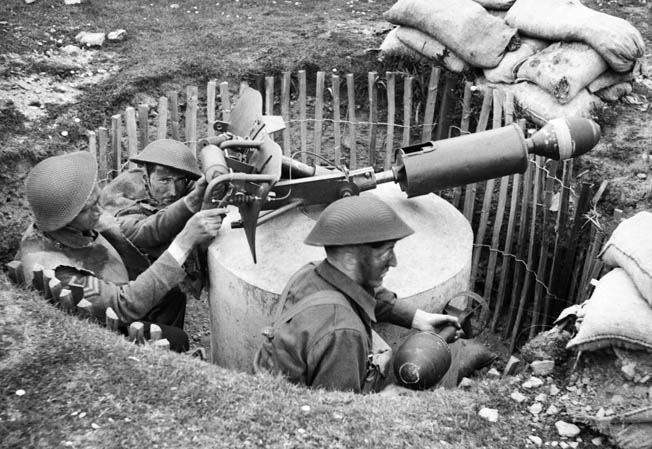
Home Guard sections and platoons, meanwhile, underwent more intensive training, were issued with smarter regulation serge battledress, increased their firepower with spigot mortars, antitank guns, Thompson submachine guns, and Sten guns, and extended their functions. They cooperated closely with the police and civil defense organizations and patrolled the River Thames and other waterways in outboard motorboats mounting Lewis guns.
By late 1940, the Home Guard had grown to 5,000 companies (or 25,000 platoons) and was commanded by Maj. Gen. Thomas R. “Rusty” Eastwood, a Rifle Brigade veteran of Egypt, Gallipoli, North Russia, and the 1940 Battle of France. Regular Army ranks were introduced, and a cadet corps of 25,000 youngsters was even formed.
The Broomstick Army had become an effective and disciplined military force, and on the march its members were often mistaken for Regular Army troops. On May 14, 1941, its first birthday, the Home Guard was granted the honor of trooping at Buckingham Palace. King George VI said, “I heartily congratulate the Home Guard on the progress made by all ranks since it was established a year ago today. On many occasions I have seen for myself the keenness with which they are fitting themselves for the discharge of vital duties in the defense of our homes….” That same month, General Eastwood was replaced as director general by Maj. Gen. Sir Robert C. Bridgeman, also of the Rifle Brigade and a wounded World War I veteran.
The scope of Home Guard activities continued to increase. Two hundred transport companies were formed using about 13,000 War Department vehicles; dispatch riders were trained under Army supervision; street fighting tactics were taught at a school in Glasgow; and Home Guard members were given priority to take over the manning of 6-inch naval guns on the south coast and antiaircraft batteries all over the country, thus freeing Regular Army units for overseas service. Eventually, 140,000 men of the Home Guard manned antiaircraft guns. The Port of London Authority had a Home Guard unit specially trained to protect the vital docks from river assault.
When Churchill made an inspection of the Westminster Palace unit on May 12, 1942, to celebrate the Home Guard’s second anniversary, he declared, “To invade this island by air is to descend in a hornet’s nest. There is no part of that nest where the stings are more ready and their effective power to injure more remarkable than here in the ancient Palace of Westminster.”
Because there had been such a response in manpower to the Home Guard, recruiting was temporarily suspended in October 1942. The ban was lifted the following month under new government legislation, and men aged 18 to 51 were conscripted. Fines were levied against personnel who failed to attend drill nights. By the summer of 1943, there were 1,750,000 men in 1,200 battalions, and the average age was now under 30. A women’s auxiliary was formed that year.
The threat of invasion had passed, but the Home Guard found itself busier than ever, particularly during the frequent air raids on England. When Luftwaffe bombers came in daytime and increasingly at night, the alert Home Guard crews gave them a warm welcome with their 3.7-inch and 4.5-inch batteries. After they shot down and damaged several enemy planes during severe night raids on the London area on January 17, 1943, a terse Ministry of Defense communiqué noted, “The Home Guard turned out and manned AA guns during last night’s raids. The muster was very satisfactory. More than one Regular [Army] battery commander stated that they came fully up to expectations and did ‘a good job of work.’”
The Home Guard had come a long way from its pitchfork and broomstick days. When a reporter asked at a May 6, 1943, press conference if too much of a defense burden was being placed on the part-time soldiers, General Bridgeman bristled, “Never yet has the Home Guard turned back from any job which they realized was necessary, and was in their power to perform and they were the right people to perform it.”
Home Guard personnel also manned new multi-barreled rocket guns to bring down low-flying enemy dive bombers. The British-designed weapons proved highly successful against targets traveling at more than 400 miles an hour and at altitudes of up to 25,000 feet.
Ironically, as the effectiveness of the Home Guard increased further, the need to deploy it was waning. Its citizen soldiers were standing by their antiaircraft and coastal guns, having freed an estimated 100,000 Regulars for other duties, when the British, American, and Canadian Armies invaded Nazi-occupied Normandy on June 6, 1944. But the successful landings and the subsequent enemy retreat spelled the coming end of the home defense force.
Prime Minister Churchill, ever mindful of its sterling defense role and concerned for the welfare of its personnel, had said in January 1944, “We should make every effort to ease the lot of the Home Guard, whose duties are more exhausting than those of any form of civil defense…. Many of these men have had little free time for more than three years At this stage in the war, Home Guard hours of duty should be officially reduced and not left to the discretion of the unit commander.”
Eventually, after its 41/2years of staunch, diverse, and sometimes thankless service, the Home Guard was officially stood down on December 3, 1944.
Author Michael D. Hull is a frequent contributor to WWII History. He resides in Enfield, Connecticut.
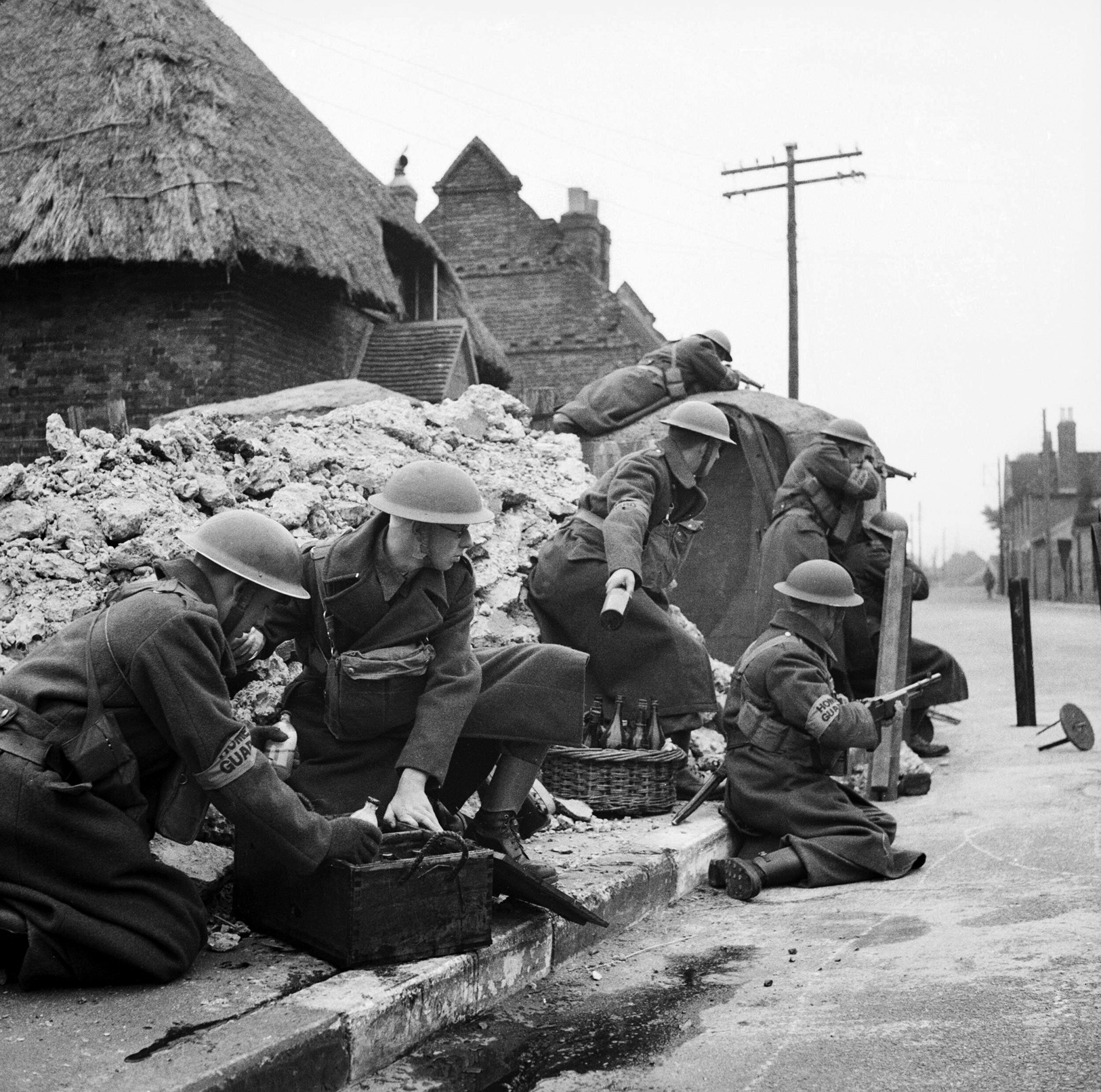
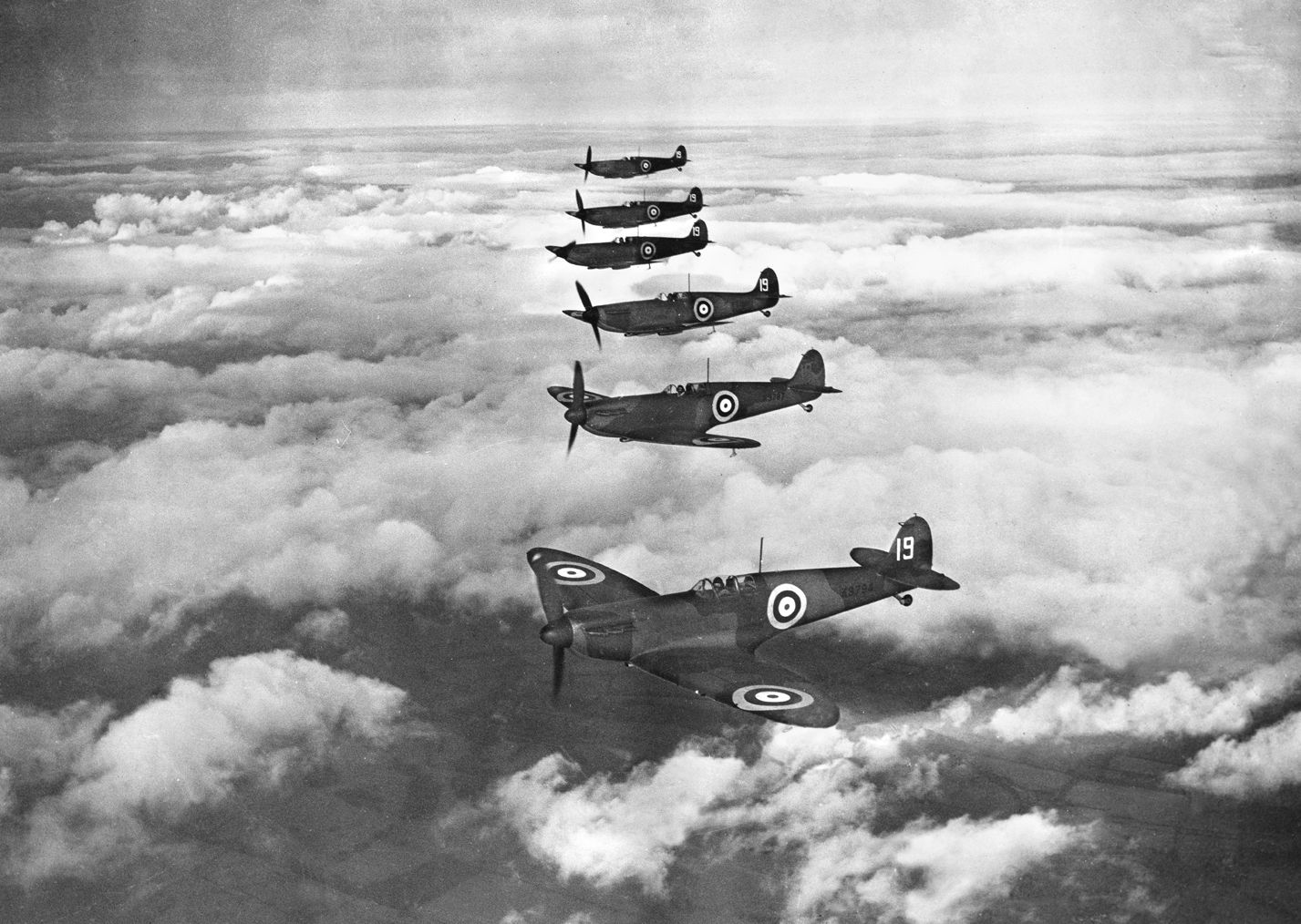
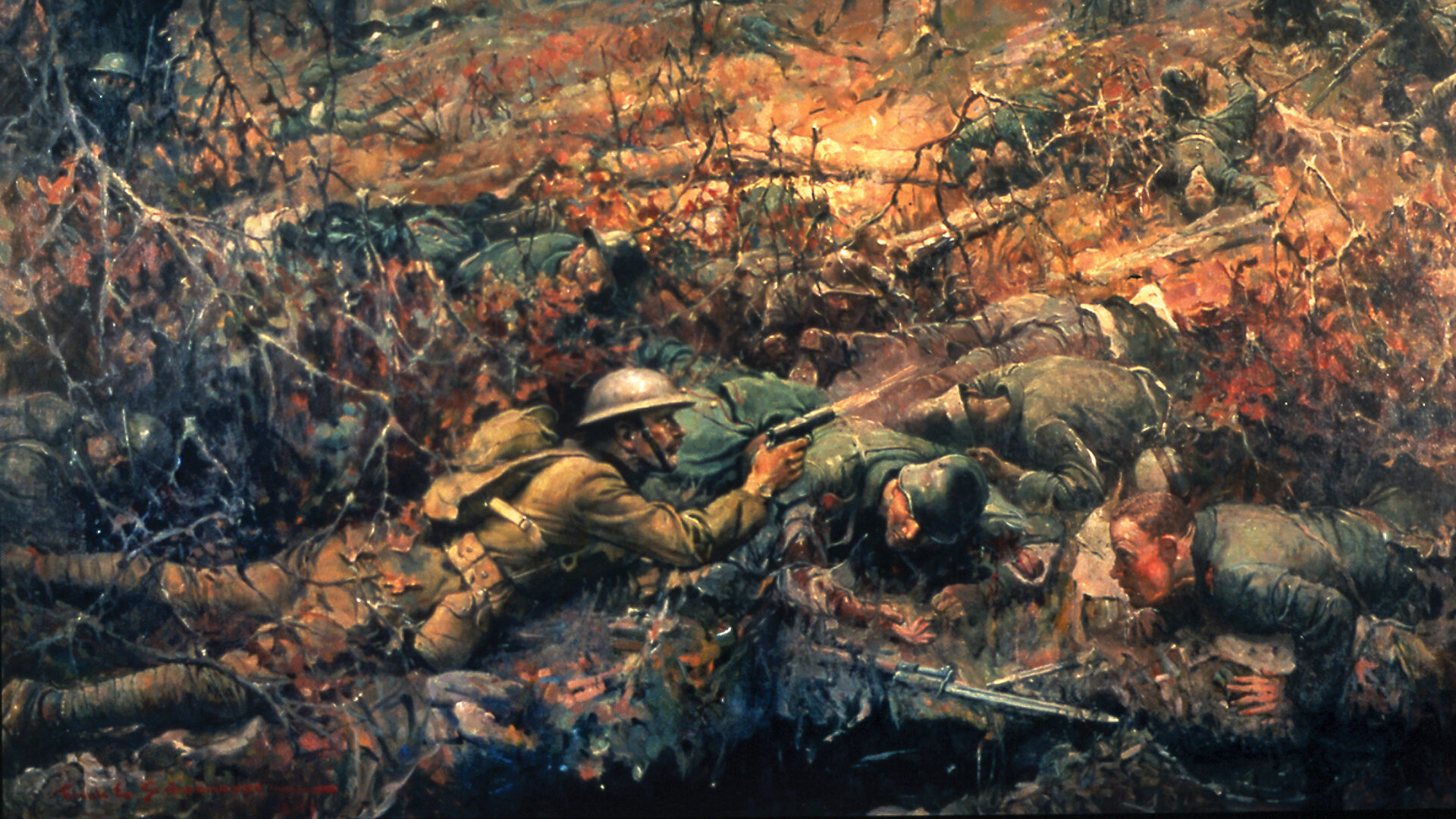
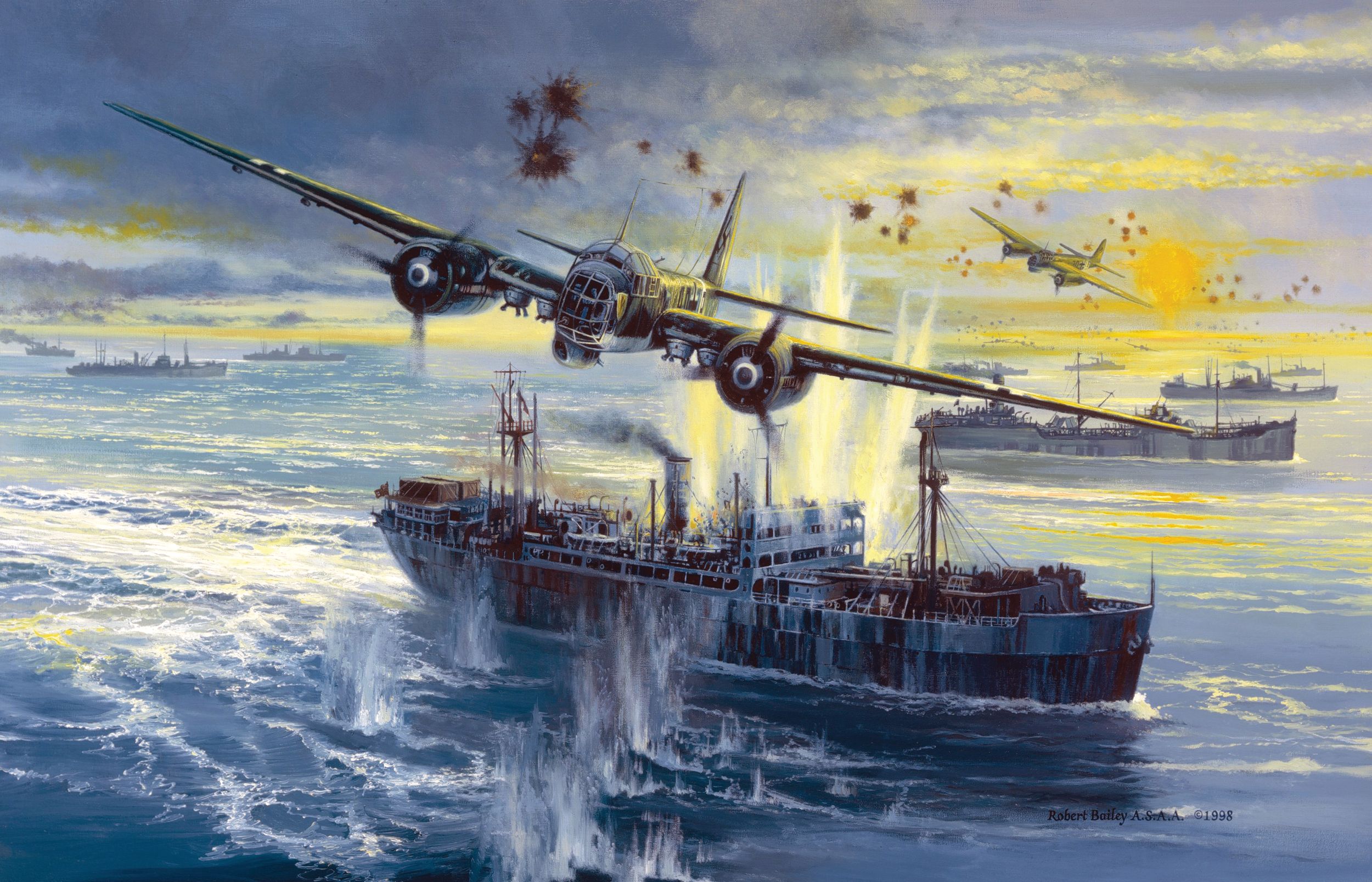
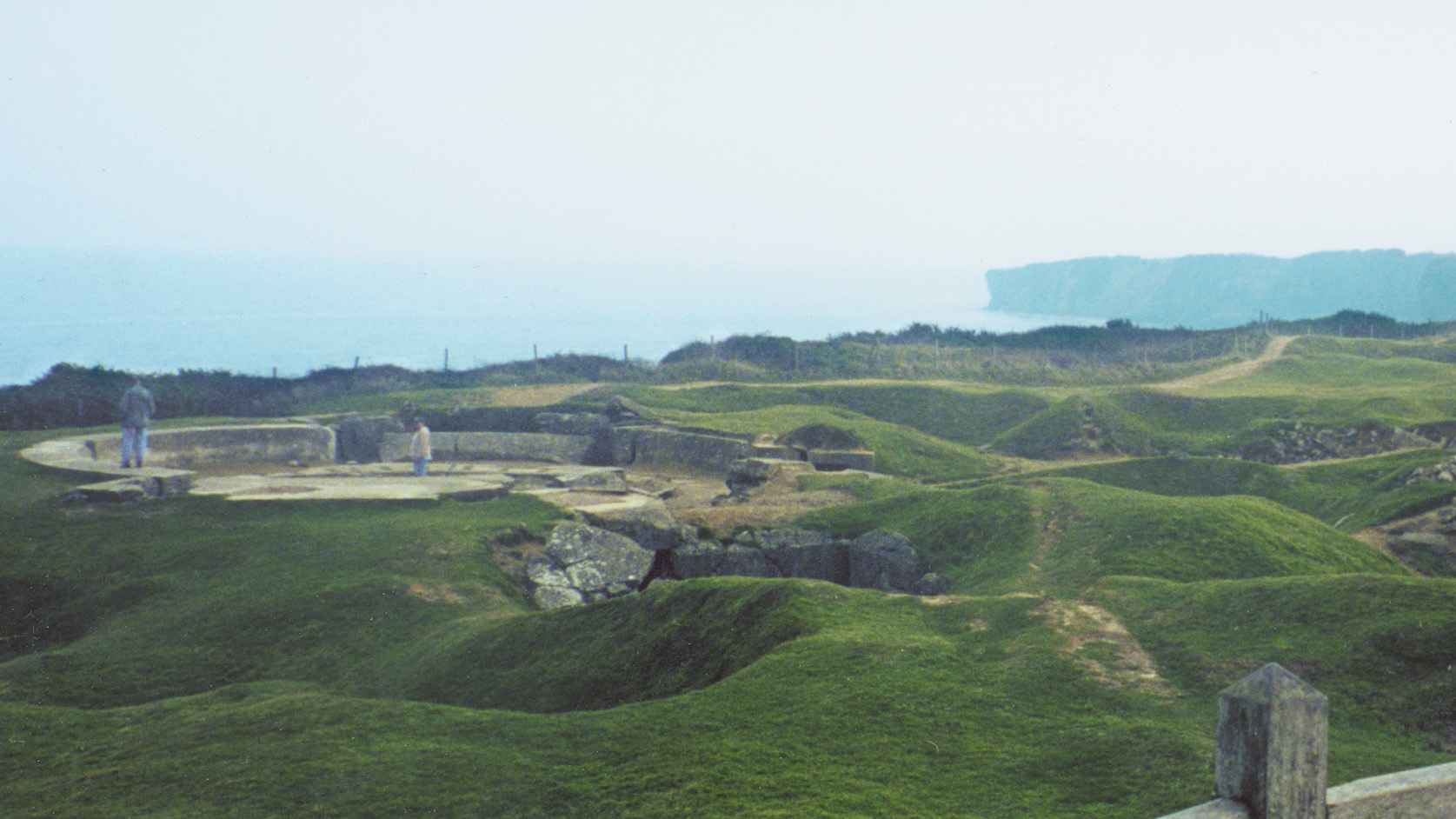
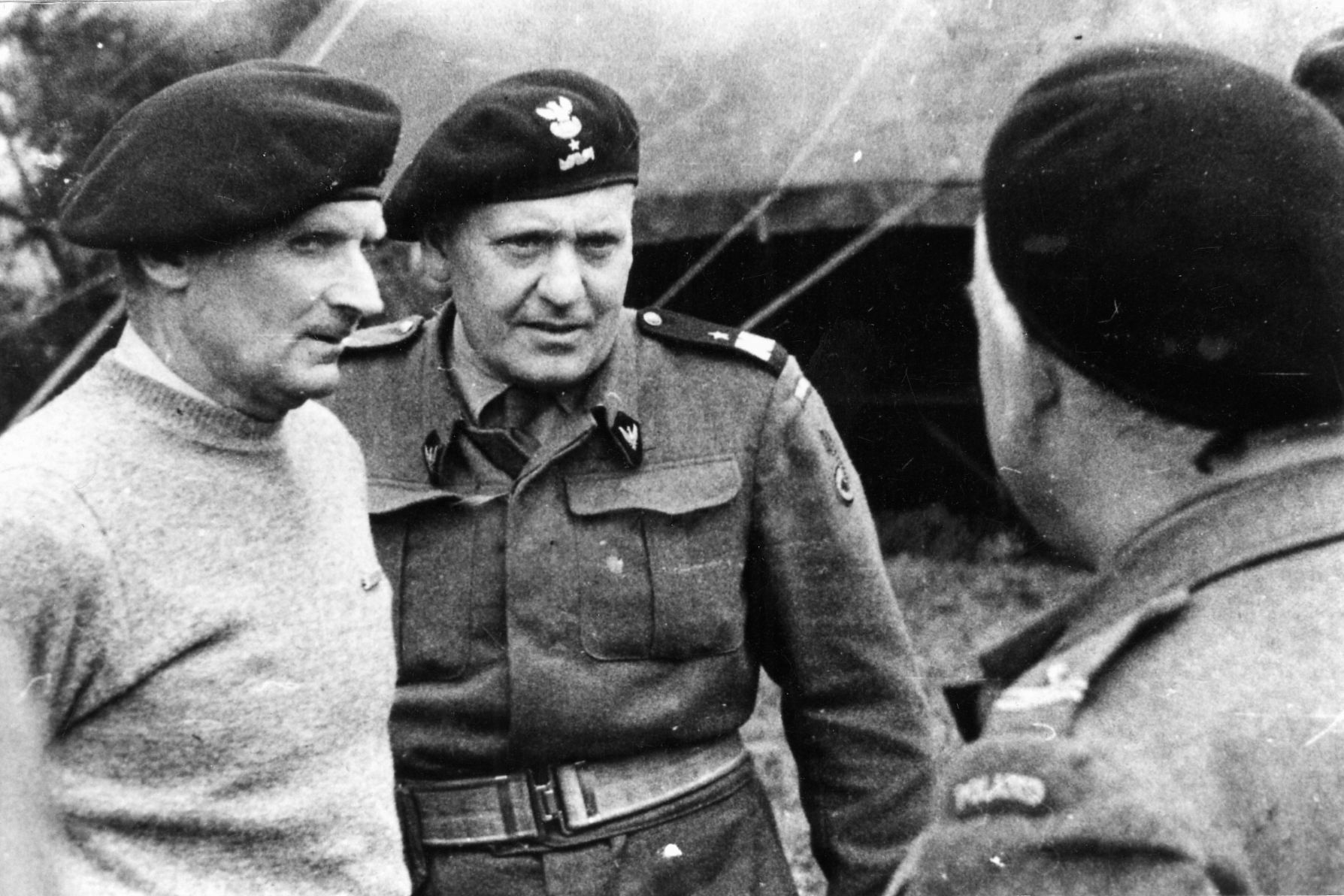
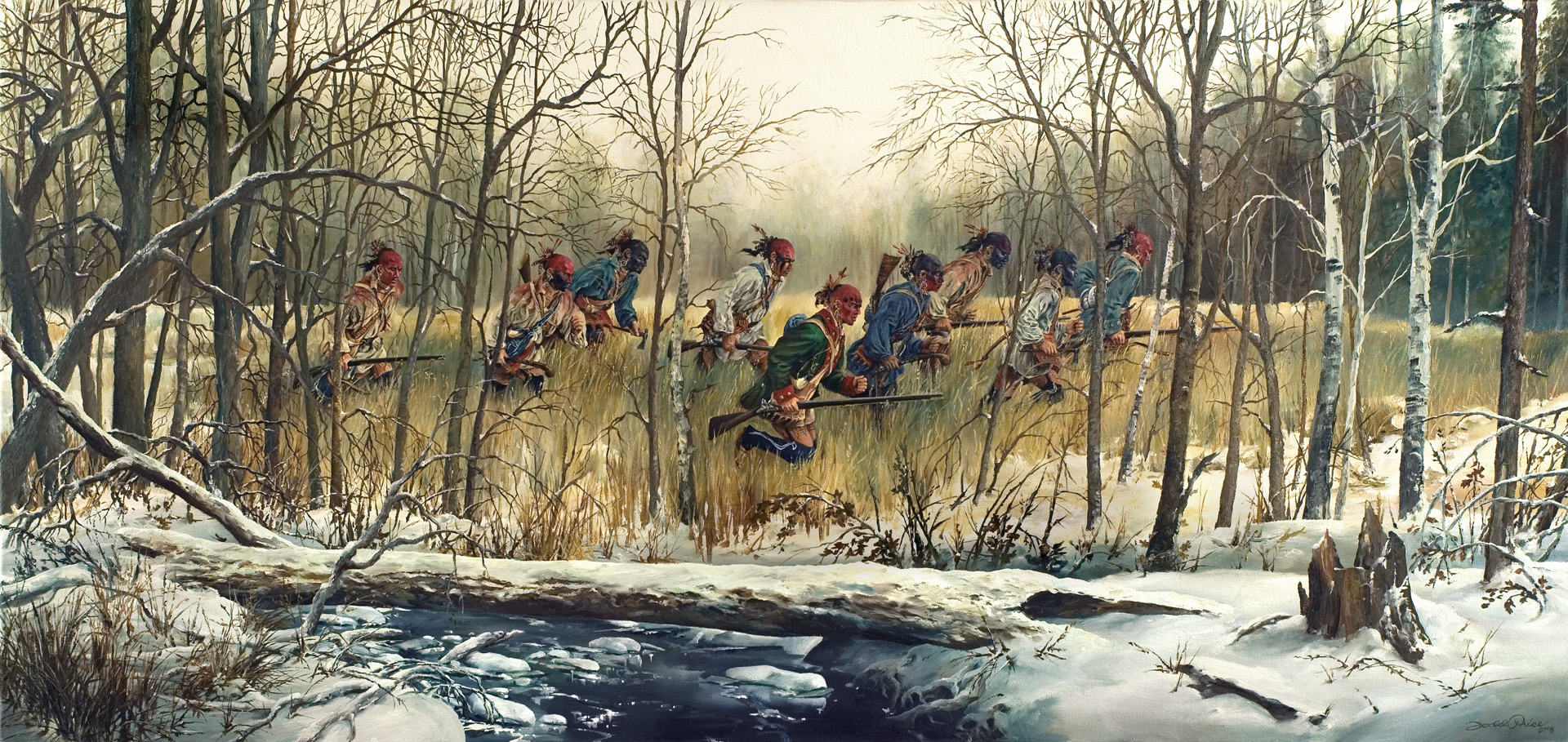
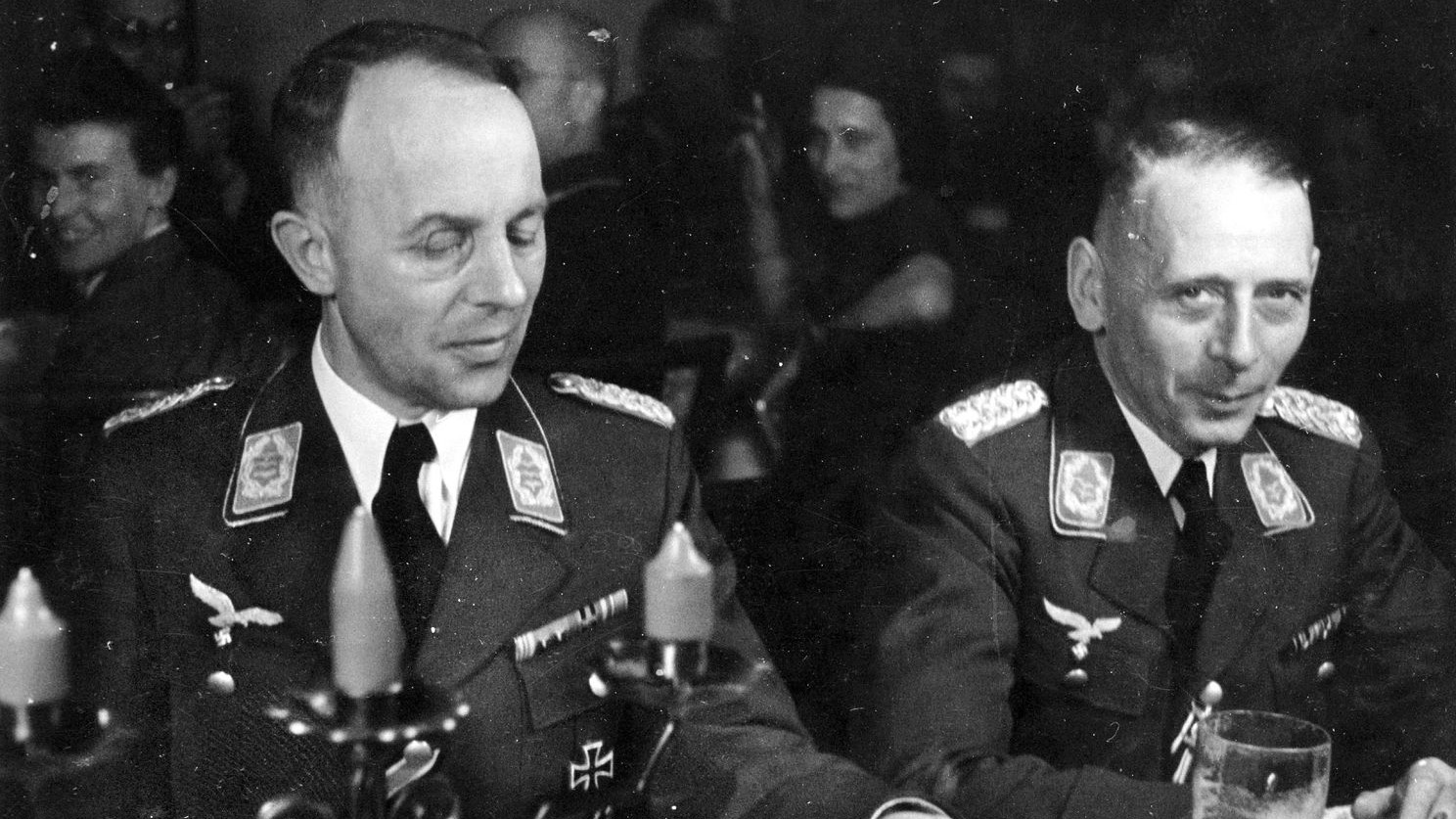
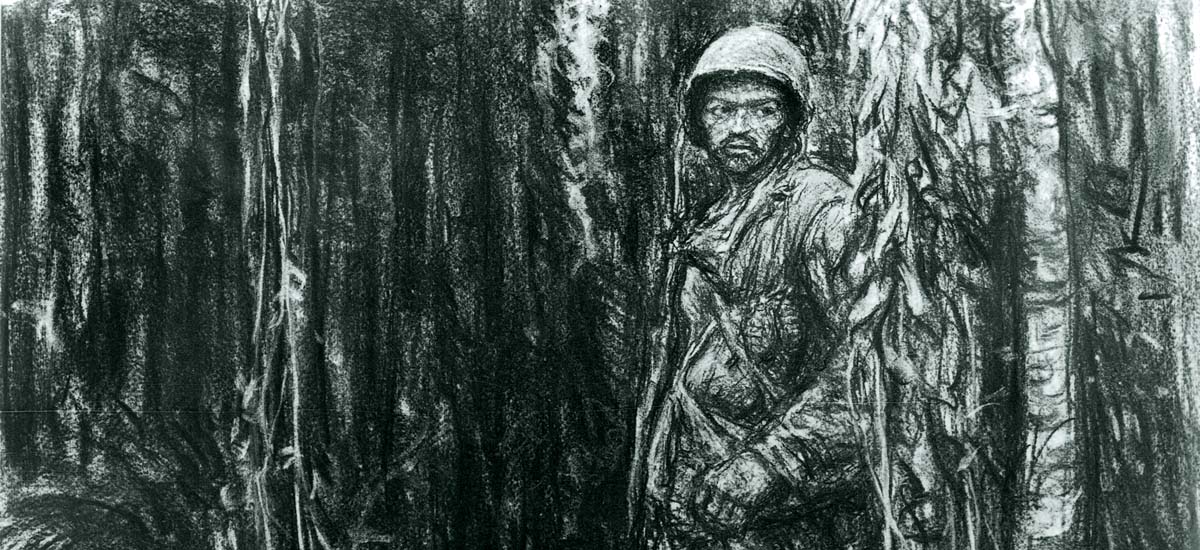
Join The Conversation
Comments
View All Comments